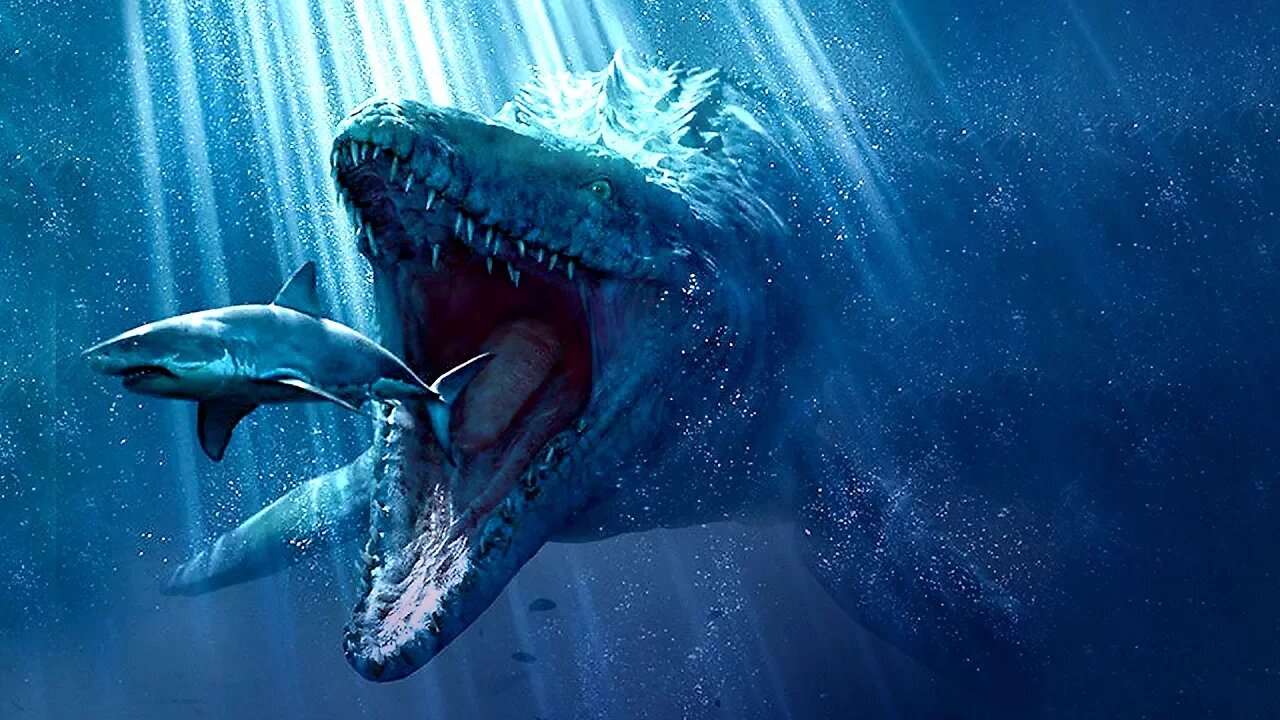Premium Only Content

Top 5 Deadliest Prehistoric Sea Creatures
5. Dunkleosteus
-This prehistoric fish is what you get when you mix a huge fish and a tank.
-This 20 foot or 6 meter armored meat eater, weighed in at 1 ton.
-Being one of the first jawed animals the Dunkleosteus could crush predators with it’s massive bite.
-It is estimated that the Dunkleosteus had a bite that produced 8000 lbs per square inch.
-The bone armor on the Dunkleosteus gave it an unfair advantage against other creatures of the sea.
-The bone was so strong other creatures, of the time, couldn’t break through it
-The teeth were not really teeth at all but just an extension of the jaw with a sharp part for chomping into prey.
-The jaw had 2 layers that could be be opened up allowing the bit to be enormous and protected
-Around the eyes of the Dunkleosteus was 4 circular bone pieces to protect the eye from damage
-based on evidence of skull structure they could have potentially been able to open their mouth and suck in food in 1/50 of a second, just think of them as a high speed vacuum, underwater, that crushes down on anything that goes in their mouth at record speed
4. Kronosaurus
-This sea creature was named after the Greek titan Cronus. It’s been many years since they roamed the waters of earth, 98 million years to be exact. The Kronosaurus measured 34 feet or 10.5 meters in length and weighed up to 11 metric tons.
-They had a long snout and head with some estimating 9 feet or 3 meters in length as well as four flippers attached to a large rib cage. The large rib cage provided extra strength likely making them fast agile swimmers.
-The teeth of the Kronosaurus lack carinae or cutting edges and are all conical shaped, like a human’s canines, measured 3 - 8 inches or 7 to 30 cm long .
-Kronosaurus fossils have been found in Australia as well as in Colombia. In 1977 a Colombian farmer turned over an enormous stone while working his field to find what he thought looked like a fossil. Turns out he found what is the best preserved fossils of the Kronosaurus.
3. Helicoprion
-The Helicoprion is a shark like fish that went extinct 250 million years ago. They are known for their spiral tooth structure or tooth-whorl as it’s called.
-The tooth whorl measured 18 inches or 45 cm in length but scientists are unsure if the teeth when deep into the throat of the fish or it was primarily an external feature. If it was deep in the throat it would suggest their diet consisted of softer creatures like jellyfish but the fact that the teeth are serrated the Helicoprion was a carnivore.
-The largest specimen of Helicoprion measured 24.6 feet or 7.5 meters in length but fossil specimens suggest their average size was half of that.
2. Mosasaurus
-The Mosasaurus is an extinct carnivorous aquatic lizard that lived over 66 million years ago.
-This massive beasts of the sea lived in north america and western europe during their days on earth.
-They measured 56 feet or 17 meters long, had a strong robust skull, and paddle like flippers, much like a turtle does. Their weapon of choice for catching prey were their massive conical teeth.
-The mosasaurus was also known for snatching prehistoric birds out of the air for a tasty treat.
-The tail had a had a large fluke like some sharks have that provided strong propulsion through the ocean waters
1. Megalodon
-Most people have heard of it, the megalodon is a gigantic prehistoric shark that you’d never want to encounter in the ocean. While many believe they existed during the same time as dinosaurs, this simply isn’t the case. There is around 40 million years between the existence of the two. The megalodon dominated ocean waters during the Cenozoic Era which was 28 - 1.5 million years ago.
-The megalodon measured up to 60 feet or 18 meters in length and weighed up to 60 tons, in comparison the biggest great white shark is only 23 feet or 7 meters in length and weighs 3.5 tons. This makes the megalodon 3 times as long and 20 times as heavy, the megalodon would eat great white sharks for breakfast.
-Sharks bones are made of cartilage, which doesn’t fossilize easily, so the only remains of the megalodon were their teeth. While just having the teeth scientists have pieced together the rough size of these creatures and there have been bones found of other marine mammals like whales with bite marks that match the megalodon's teeth size.
Image and Info Sources:
https://pastebin.com/QnBVcrqX
Check out some of our other videos:
Top 10 LONGEST LIVING Creatures on Earth
https://www.youtube.com/watch?v=IDaPH_ZGiVw&feature=youtu.be
For copyright matters please contact: titantoplist@gmail.com
Intro music thanks to Machinmasound:
Rallying the Defense:
https://www.youtube.com/watch?v=ruPk4RD19Nw
-
 0:45
0:45
Earth Titan
1 year agoWilderness #Camp ??
221 -
 1:12:20
1:12:20
Josh Pate's College Football Show
7 hours ago $2.81 earnedBig CFB Changes Coming | DeBoer Fixing Alabama | Signing Day Reaction | OhioSt vs Michigan Shift
47.8K2 -
 59:39
59:39
The StoneZONE with Roger Stone
4 hours agoEXCLUSIVE: James O'Keefe Talks to Roger Stone About Dropped Charges Against Him | The StoneZONE
37.9K2 -
 1:48:10
1:48:10
megimu32
3 hours agoON THE SUBJECT: Comedian LOSES It At Heckler!
23.7K3 -
 1:17:13
1:17:13
Redacted News
7 hours agoTRUMP IS BURNING IT ALL DOWN AND DEMOCRATS WANT HIM IMPEACHED AGAIN, USAID ROT GOES DEEP | Redacted
172K357 -
 52:23
52:23
Candace Show Podcast
8 hours agoUPDATE! Taylor Swift Goes Full Dragon Against Blake Lively | Candace Ep 144
143K216 -
 LIVE
LIVE
VOPUSARADIO
1 day agoPOLITI-SHOCK! KILL THE DEEP STATE!! PLUS: 3 SPECIAL GUESTS!
117 watching -
 54:41
54:41
LFA TV
1 day agoCorruption Like You Never Imagined | TRUMPET DAILY 2.6.25 7pm
44.2K15 -
 39:10
39:10
theDaily302
14 hours agoThe Daily 302- JJ Carrell
26.4K1 -
 1:20:12
1:20:12
Common Threads
6 hours agoLIVE DEBATE: Is Elon Musk Going Too Far with Spending Cuts?
39.9K14